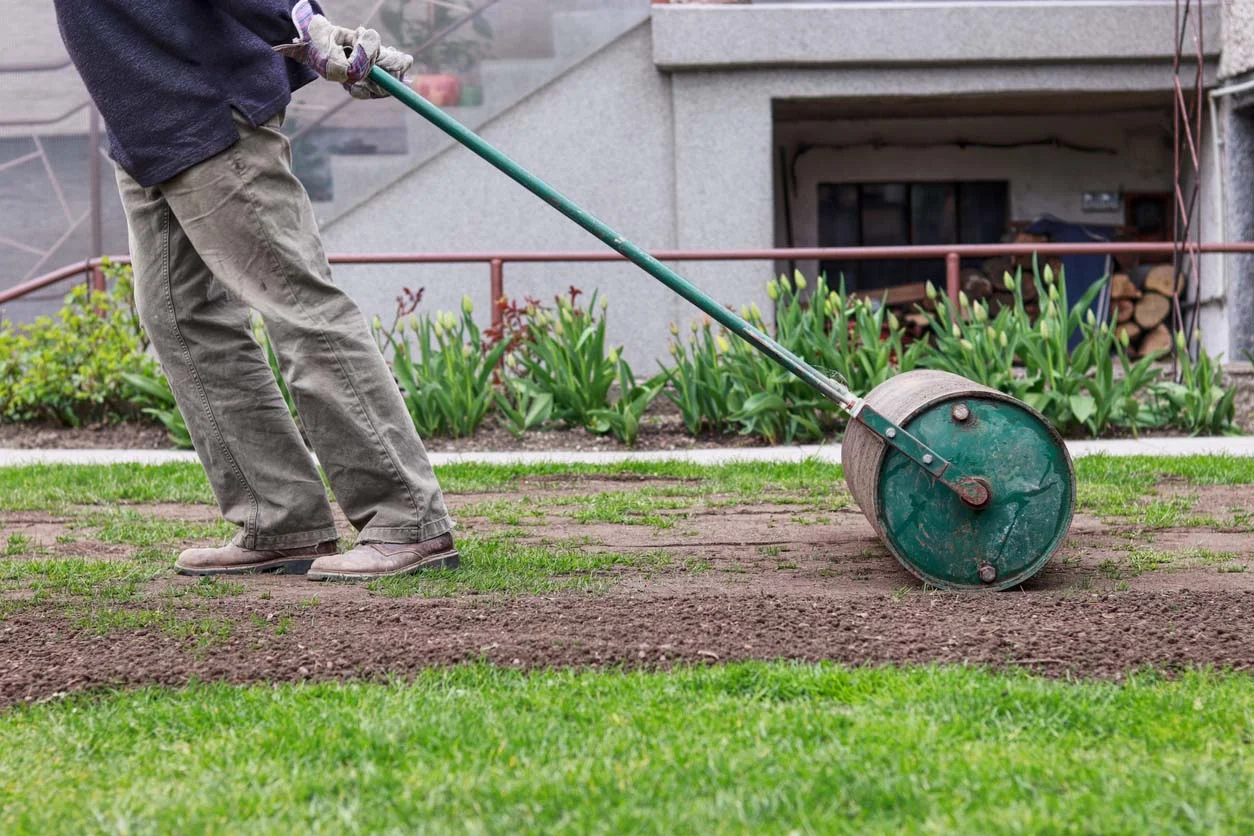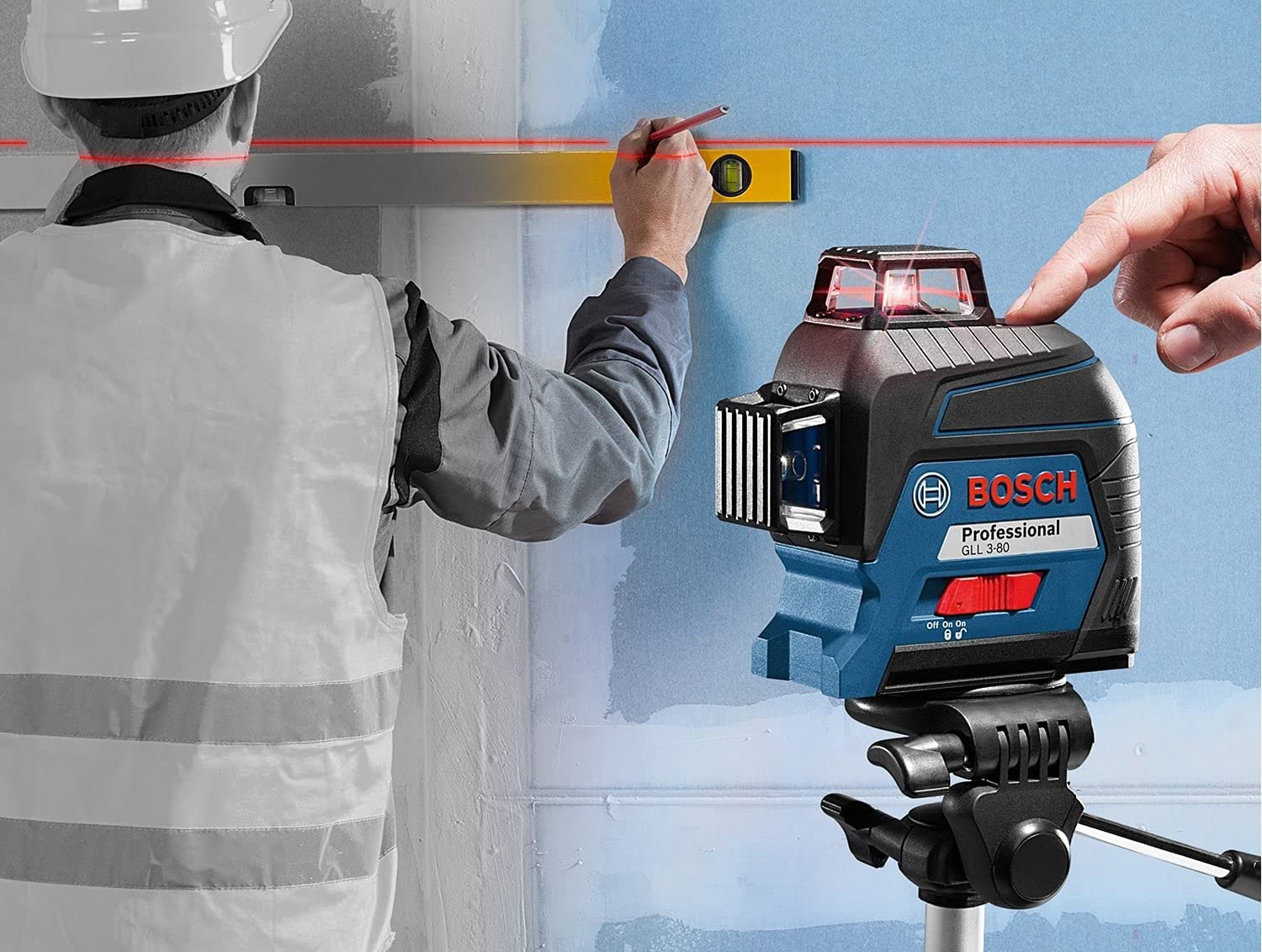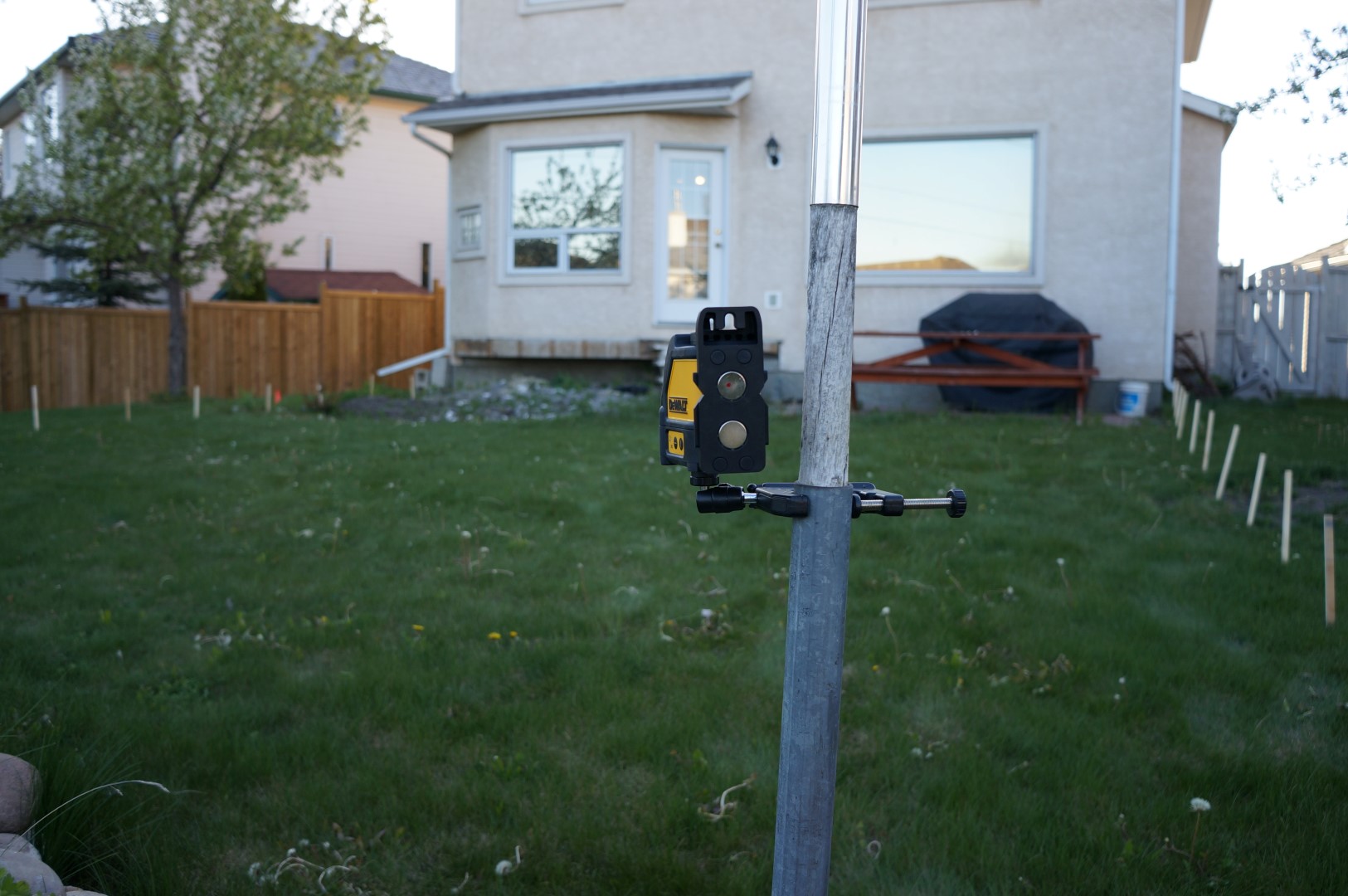Home>Gardening & Outdoor>Landscaping Ideas>How To Level Grass


Landscaping Ideas
How To Level Grass
Modified: August 28, 2024
Learn effective landscaping ideas for leveling grass and creating a beautiful outdoor space. Discover expert tips and techniques for a flawless lawn.
(Many of the links in this article redirect to a specific reviewed product. Your purchase of these products through affiliate links helps to generate commission for Storables.com, at no extra cost. Learn more)
Introduction
Ensuring that your lawn is level is a crucial aspect of maintaining a healthy and visually appealing outdoor space. A level lawn not only enhances the overall aesthetic of your property but also provides a more functional and enjoyable area for various activities. Whether it’s hosting outdoor gatherings, playing sports, or simply relaxing in your yard, a level lawn offers numerous benefits that contribute to the overall well-being of your outdoor environment.
One of the primary reasons for leveling grass is to create a smooth, even surface that promotes healthy and uniform grass growth. Uneven terrain can lead to water pooling in certain areas, causing drainage issues and potentially leading to the formation of unsightly puddles. By leveling the grass, you can prevent water from accumulating in specific spots and ensure that it is distributed evenly across the entire lawn.
Furthermore, a level lawn provides a safer environment for various activities. Whether children are playing or guests are walking around, an uneven lawn can pose tripping hazards and make certain areas less accessible. By leveling the grass, you can create a safer and more navigable space for everyone to enjoy.
Additionally, a level lawn contributes to the overall curb appeal of your property. A well-maintained, even lawn enhances the visual appeal of your outdoor space, making it more inviting and aesthetically pleasing. This can significantly elevate the overall appearance of your property and create a positive impression on visitors and passersby.
Moreover, a level lawn provides a more conducive environment for lawn care activities. From mowing and fertilizing to general maintenance, a level surface makes these tasks more manageable and effective. It allows for consistent application of lawn care products and promotes uniform grass growth, resulting in a healthier and more vibrant lawn.
By understanding the importance of leveling grass and the benefits it offers, you can take proactive steps to enhance the overall quality and functionality of your lawn. With the right techniques and tools, achieving a level lawn is an attainable goal that can transform your outdoor space into a more enjoyable and visually appealing environment.
Key Takeaways:
- Achieving a level lawn is crucial for a beautiful and safe outdoor space. Regular assessment, proper tools, and strategic techniques like topdressing and seeding are key to maintaining a vibrant and even lawn.
- After leveling, consistent watering, mowing, and vigilance for future unevenness are essential for a healthy and visually appealing lawn. Embrace the journey of leveling your lawn and enjoy a vibrant outdoor haven.
Read more: How To Level Uneven Grass
Assessing the Lawn
Before embarking on the process of leveling your lawn, it’s essential to assess the current state of your outdoor space. This involves identifying uneven areas and understanding the slope and grade of the terrain, which are crucial factors in determining the most effective leveling techniques.
Identifying Uneven Areas
Begin by visually inspecting your lawn for any noticeable unevenness. Look for areas where the ground appears sunken or raised, as well as spots that collect water after rainfall. These uneven areas can stem from various factors, including soil settling, root growth, or natural landscape changes. By identifying these trouble spots, you can target them for specific leveling treatments to restore a uniform surface.
Another effective method for identifying uneven areas is to walk across the lawn and take note of any areas that feel uneven underfoot. This tactile approach can help pinpoint subtle irregularities that may not be immediately apparent upon visual inspection. By systematically traversing the lawn, you can create a mental map of the uneven areas that require attention during the leveling process.
Measuring Slope and Grade
Understanding the slope and grade of your lawn is essential for determining the extent of unevenness and planning the appropriate leveling techniques. You can measure the slope using a long, straight board or a dedicated slope measurement tool. Place the board or tool at various points across the lawn and use a level to determine the degree of slope in different areas.
Additionally, assessing the grade of your lawn involves understanding how the terrain slopes in relation to a reference point, such as the foundation of your home or a specific elevation benchmark. This information is crucial for ensuring proper drainage and preventing water accumulation in low-lying areas.
By accurately assessing the slope and grade of your lawn, you can gain valuable insights into the topographical characteristics of your outdoor space. This knowledge forms the foundation for implementing effective leveling techniques that address the specific unevenness and promote a balanced and functional lawn surface.
Tools and Materials
When it comes to leveling your lawn, having the right tools and materials at your disposal is essential for achieving optimal results. From basic leveling equipment to more advanced materials for specialized treatments, a well-equipped toolkit can streamline the leveling process and ensure a more uniform and visually appealing lawn surface.
Read more: How To Level A Concrete Patio
Necessary Equipment for Leveling
Several essential tools are indispensable for basic lawn leveling tasks. These include a sturdy garden rake for spreading and leveling soil, a shovel for moving and redistributing soil, and a lawn roller for compacting and smoothing the surface. Additionally, a quality wheelbarrow can facilitate the transportation of soil and other materials across the lawn, making the leveling process more efficient.
Furthermore, a reliable leveling tool, such as a long straight board or a dedicated leveling instrument, is crucial for assessing the evenness of the lawn surface during the leveling process. This tool helps identify areas that require additional attention and ensures that the final result is a uniformly level lawn.
Optional Materials for More Advanced Leveling
In addition to the essential equipment, there are optional materials that can enhance the effectiveness of lawn leveling, especially for more advanced treatments. Topdressing materials, such as high-quality topsoil or compost, can be used to fill in low-lying areas and improve the overall soil composition. These materials contribute to the long-term health and vitality of the grass by providing essential nutrients and promoting optimal root development.
For more extensive leveling projects, specialized materials like sand or leveling mix can be utilized to address significant unevenness and create a smoother lawn surface. These materials offer enhanced leveling capabilities and can be particularly beneficial for areas with persistent drainage issues or pronounced dips and bumps.
Moreover, advanced techniques such as overseeding and sodding may require specific materials tailored to the type of grass and the local climate. Quality grass seed, sod rolls, and specialized soil amendments are essential for promoting healthy grass growth and establishing a lush, even lawn surface.
By understanding the necessary equipment and optional materials for lawn leveling, you can assemble a comprehensive toolkit that meets the specific requirements of your leveling project. Whether addressing minor unevenness or undertaking more extensive leveling treatments, having the right tools and materials at your disposal is essential for achieving a level and vibrant lawn.
Leveling Techniques
Implementing the right leveling techniques is essential for achieving a smooth and even lawn surface. From basic topdressing with soil to more advanced treatments like core aerating, each technique plays a crucial role in addressing unevenness and promoting healthy grass growth. By understanding and applying these leveling methods effectively, you can transform your lawn into a visually appealing and functional outdoor space.
Topdressing with Soil
Topdressing with soil is a fundamental leveling technique that involves applying a thin layer of topsoil or compost across the lawn surface. This method is particularly effective for filling in low-lying areas, smoothing out minor bumps, and improving the overall soil structure. By spreading a uniform layer of topdressing material, you can create a more even surface and provide essential nutrients for grass growth.
Read more: How To Level Ground For Decking
Using a Lawn Roller
A lawn roller is a valuable tool for compacting and smoothing the soil after topdressing or other leveling treatments. By rolling the lawn surface, you can help the topdressing material settle evenly, eliminate air pockets, and promote a more uniform ground texture. This technique is especially beneficial for enhancing the overall stability and evenness of the lawn, resulting in a more level and visually appealing surface.
Seeding and Overseeding
Seeding and overseeding are effective techniques for promoting grass growth and filling in sparse or uneven areas. By strategically distributing grass seed across the lawn, you can encourage new growth and establish a denser, more uniform grass cover. Overseeding, in particular, can help address thin or patchy areas, contributing to a more consistent and vibrant lawn surface.
Sodding
For more immediate and comprehensive leveling results, sodding is a highly effective technique. Sod rolls, consisting of mature grass and a layer of soil, can be laid directly onto the lawn surface to create an instant, level grass cover. This method is particularly beneficial for addressing larger areas of unevenness and establishing a uniform lawn surface with minimal time and effort.
Core Aerating
Core aerating involves removing small plugs of soil from the lawn to alleviate compaction, improve drainage, and promote healthy root development. This technique is especially useful for addressing underlying soil issues and enhancing the overall resilience and evenness of the lawn. By allowing air, water, and nutrients to penetrate the soil more effectively, core aerating can contribute to a more balanced and vibrant lawn surface.
By incorporating these leveling techniques into your lawn care regimen, you can effectively address unevenness and create a more visually appealing and functional outdoor space. Whether using fundamental methods like topdressing and lawn rolling or implementing more advanced treatments such as sodding and core aerating, each technique plays a vital role in achieving a level and vibrant lawn.
Read more: How To Level Ground For Patio Stones
Aftercare and Maintenance
After leveling your lawn, proper aftercare and ongoing maintenance are essential for preserving the evenness and promoting the long-term health of the grass. From consistent watering and monitoring to regular mowing and fertilizing, these aftercare practices contribute to the overall vitality and visual appeal of your lawn, ensuring that it remains level and vibrant throughout the seasons.
Watering and Monitoring
Following the leveling process, it’s crucial to establish a regular watering routine to promote healthy grass growth and facilitate the integration of leveling materials into the soil. Adequate watering helps the topdressing material settle and encourages the grass roots to establish a strong hold in the soil. Additionally, monitoring the moisture levels and the overall condition of the lawn allows you to identify any areas that may require additional attention or adjustments.
Regular monitoring also enables you to assess the effectiveness of the leveling treatments and track the progress of the grass as it adapts to the leveled surface. By observing the lawn’s response to the leveling process, you can make informed decisions about any supplementary care or maintenance measures that may be necessary to ensure a consistently level and healthy lawn.
Mowing and Fertilizing
Proper mowing and fertilizing practices are integral to maintaining a level and vibrant lawn. Regular mowing at the appropriate height helps promote even grass growth and contributes to a uniform lawn surface. By adhering to recommended mowing heights and patterns, you can encourage a consistent and aesthetically pleasing lawn appearance.
Furthermore, strategic fertilization supports the overall health and resilience of the grass, contributing to a lush and vibrant lawn. Applying the right type and amount of fertilizer at the appropriate times helps sustain the grass’s vigor and ensures consistent growth across the lawn. This proactive approach to mowing and fertilizing contributes to the long-term evenness and visual appeal of the lawn.
Addressing Future Unevenness
Even after leveling your lawn, it’s important to remain vigilant for any signs of future unevenness. Factors such as soil settling, natural landscape changes, or the development of new drainage issues can contribute to the formation of uneven areas over time. Regular inspections and proactive maintenance allow you to identify and address any emerging unevenness before it becomes more pronounced.
Additionally, addressing minor unevenness as soon as it is detected can prevent the need for more extensive leveling treatments in the future. Whether through targeted topdressing, overseeding, or localized sodding, promptly addressing any irregularities helps maintain a level and visually appealing lawn surface over the long term.
By incorporating these aftercare and maintenance practices into your lawn care routine, you can preserve the evenness achieved through leveling and promote the ongoing health and vibrancy of your lawn. From attentive watering and monitoring to strategic mowing, fertilizing, and proactive unevenness management, these practices contribute to a consistently level and visually appealing outdoor space.
Read more: How To Level A Laser Level Tripod
Conclusion
Creating and maintaining a level lawn is a rewarding endeavor that enhances the beauty, functionality, and overall enjoyment of your outdoor space. By implementing effective leveling techniques and adopting proactive aftercare and maintenance practices, you can achieve a visually appealing and vibrant lawn that provides a welcoming environment for various activities. As you strive to achieve a level lawn, it’s essential to focus on key points and embrace practical tips that contribute to the success of your lawn leveling efforts.
Summary of Key Points
Throughout the process of leveling your lawn, several key points emerge as crucial considerations. From assessing the terrain and identifying uneven areas to selecting the right tools and materials, each step plays a pivotal role in achieving a level and visually appealing lawn. Furthermore, implementing effective leveling techniques, such as topdressing, lawn rolling, seeding, and sodding, contributes to the overall evenness and health of the grass, while proactive aftercare and ongoing maintenance practices help preserve the leveled surface and promote the long-term vitality of the lawn.
Final Tips for Achieving a Level Lawn
As you work towards achieving a level lawn, consider the following final tips to enhance the success of your leveling endeavors:
- Regularly assess your lawn for uneven areas and address them promptly to prevent the development of more significant irregularities.
- Invest in high-quality tools and materials to ensure the effectiveness and longevity of your leveling treatments.
- Establish a consistent watering and monitoring routine to facilitate the integration of leveling materials and promote healthy grass growth.
- Adopt strategic mowing and fertilizing practices to maintain a uniform lawn surface and sustain the overall health of the grass.
- Remain vigilant for any signs of future unevenness and address them proactively to preserve the level and visually appealing nature of your lawn.
By incorporating these tips into your lawn care regimen, you can achieve and maintain a level lawn that enhances the beauty and functionality of your outdoor space. Whether hosting gatherings, enjoying recreational activities, or simply relaxing in your yard, a level lawn provides a welcoming and aesthetically pleasing environment for all to enjoy.
Embrace the journey of leveling your lawn, and revel in the transformation of your outdoor space into a vibrant and visually stunning haven.
Frequently Asked Questions about How To Level Grass
Was this page helpful?
At Storables.com, we guarantee accurate and reliable information. Our content, validated by Expert Board Contributors, is crafted following stringent Editorial Policies. We're committed to providing you with well-researched, expert-backed insights for all your informational needs.












0 thoughts on “How To Level Grass”